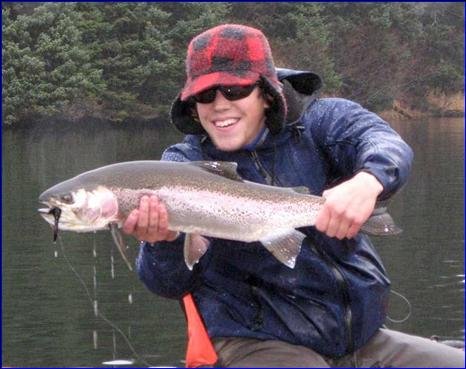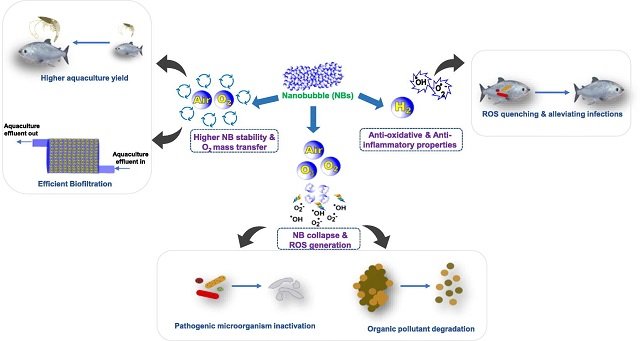
Fish are increasingly recognized as sensitive creatures with complex needs. This is particularly important in aquaculture, where fish welfare is becoming a top priority.
Aquaculture is a growing industry, but ensuring the welfare of these aquatic creatures is paramount. Scientists are exploring innovative solutions, and a recent study suggests that something as simple as air bubbles can significantly improve fish welfare.
A team of scientists from INRAE, the Hungarian University of Agriculture and Life Sciences, JUNIA, and the University of Lorraine evaluated the effects of an innovative enrichment strategy involving the introduction of a pipe that generates a curtain of air bubbles into the tank during the early stages of life.
They used rainbow trout (Oncorhynchus mykiss) as a model, and the effects of the bubbles were compared to a control group without bubbles. The bubbles were diffused for one hour, four times a day, from the early stages of the fish’s life.
Animal Welfare
European standards on fish welfare are being reviewed, and rainbow trout, one of the main European aquaculture species, is a key focus. But how can we improve fish welfare beyond mere survival? This is where “positive welfare” comes into play, aiming to create positive emotions and a sense of control for captive fish.
It encompasses both physical and mental well-being, including positive experiences such as comfort, stimulation, and a sense of control. One approach to achieving this is environmental enrichment, which increases the complexity and biological relevance of a captive environment to reduce stress and abnormal behaviors.
Environmental Enrichment
Enrichment can be social, nutritional, cognitive, sensory, or physical. Physical enrichment, such as the addition of structures (shelters or plants), has been shown to have benefits such as improved growth and reduced aggression. However, these structures can be impractical for fish farms due to cleaning, management, harvesting difficulties, and the possibility of harboring pathogens.
The research explored a promising alternative: bubble curtains. Previous studies have shown that rainbow trout are attracted to bubbles, suggesting they may find them stimulating. Bubble curtains could provide a triplet of enrichment:
Stay Always Informed
Join our communities to instantly receive the most important news, reports, and analysis from the aquaculture industry.
- Physical: Complexifying the environment.
- Occupational: Encouraging activity if bubbles are not continuous.
- Sensory: Providing tactile stimulation from the bubbles themselves.
Bubble Curtain
Previous small-scale research confirmed the positive appeal of bubbles to fish. However, the long-term effects on established welfare indicators, such as aggression and fin damage, were not examined under standard rearing conditions.
Rainbow trout served as the model fish, and researchers compared two groups: one exposed to the bubble curtain for one hour, four times a day (bubble condition) and a control group without bubbles. Effects were assessed both in the short term (7 weeks) and long term (21 weeks).
Key Findings
The bubbles proved to be a success! Fish exposed to the bubble curtain showed a significant decrease in aggressive and abnormal behaviors, not only during bubble diffusion but also during feeding hours and neutral periods in the long-term experiment.
But the benefits go beyond calmer behavior. The study also revealed that juvenile fish found the bubbles inherently attractive. Furthermore, fish raised with the bubble curtain exhibited improved long-term learning abilities, as demonstrated by a spatial learning test.
The most compelling long-term benefit emerged in a spatial learning test. Fish exposed to bubbles for 21 weeks took less time to find a reward compared to the control group. This suggests that the bubble environment improved the fish’s learning abilities.
Interestingly, the bubble effect seemed to reduce long-term fear, with fish exposed to bubbles showing a calmer response in an emotional reactivity test. However, levels of appetite and stress hormones remained similar between groups.
The good news extends to fish farmers: bubble curtains are easy to implement and maintain. This research suggests they could be a valuable tool for promoting positive welfare in fish farms.
Conclusion
In conclusion, this study demonstrates that bubble curtains serve as multifaceted environmental enrichment for fish. By providing physical, occupational, and sensory stimulation, they can significantly improve the welfare and cognitive abilities of farmed rainbow trout. This simple yet effective technique paves the way for integrating positive welfare practices in aquaculture, ensuring not only happy fish but also potentially more productive industry.
The study was funded by the INRAE Animal Health and Welfare Metaprogram, the French CASDAR fund (Special Allocation Account “Agricultural and Rural Development”), and the European project AQUAEXCEL3.0 TNA.
Contact
Violaine Colson
INRAE, LPGP, F-35042 Rennes, France
Email: violaine.colson@inrae.fr
Reference (open access)
Amichaud, O., Lafond, T., Fazekas, G. L., Kleiber, A., Kerneis, T., Batard, A., Goardon, L., Labbé, L., Lambert, S., Milla, S., & Colson, V. (2024). Air bubble curtain improves the welfare of captive rainbow trout fry and fingerlings. Aquaculture, 586, 740828. https://doi.org/10.1016/j.aquaculture.2024.740828
Editor at the digital magazine AquaHoy. He holds a degree in Aquaculture Biology from the National University of Santa (UNS) and a Master’s degree in Science and Innovation Management from the Polytechnic University of Valencia, with postgraduate diplomas in Business Innovation and Innovation Management. He possesses extensive experience in the aquaculture and fisheries sector, having led the Fisheries Innovation Unit of the National Program for Innovation in Fisheries and Aquaculture (PNIPA). He has served as a senior consultant in technology watch, an innovation project formulator and advisor, and a lecturer at UNS. He is a member of the Peruvian College of Biologists and was recognized by the World Aquaculture Society (WAS) in 2016 for his contribution to aquaculture.




